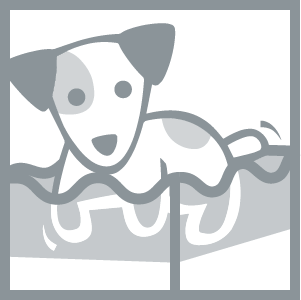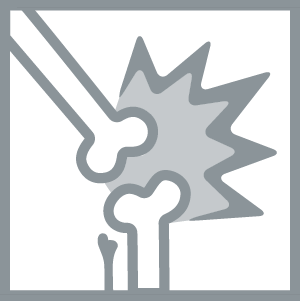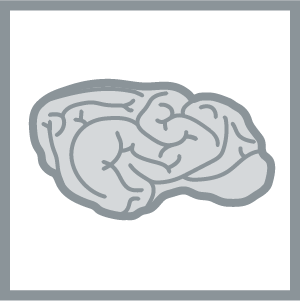POST-OP & INJURY
POST-SURGICAL REHABILITATION
Rehabilitation after surgery is critical to helping a patient return to normal activity with minimal complications. Rehabilitation can help relieve pain and reeducate the patient to walk normally. Rehabilitation is also important to prevent further injury to the affected limb, or to the rest of the body that has been compensating for the loss of function of the injured limb. Any of our treatment options may be used, depending on the type of surgery and where the patient is in his/her recovery process.
TENDON/MUSCLE INJURIES
Often overlooked in diagnostics and treatment of pets, muscle and tendon sprains, strains and stresses are common in our four legged friends. WAG can focus on injuries to muscles and tendons creating a targeted program to heal and strengthen. LASER, acupuncture, ultrasound or massage therapies may be used to alleviate pain and decrease tissue inflammation.
SPINAL SURGERY & INJURY
Recovery from spinal surgery can be a difficult process and it is vital to attempt to restore mobility as soon as possible. Physiotherapy and rehabilitation are imperative to the success of either surgical or conservative management of spinal injuries.
Treatment typically includes hydrotherapy, acupuncture and exercises for sensory stimulation and to facilitate return of neuromuscular control in the limbs. Spinal injury rehabilitation includes manual therapy techniques such as massage and joint mobilization, modalities such as heat and ice for pain relief, electrical stimulation to increase muscle contraction, balance and coordination exercises and techniques to re-teach ambulation. Supportive harnesses, wheelchairs and protective booties for feet may be prescribed if needed.
We develop a tailored rehabilitation program specific to your pet’s needs and condition at your pet’s initial evaluation including an outline of exercise restrictions specific to your pet’s stage of healing and your home environment.
FRACTURE REPAIR
If your pet has suffered a fall or other traumatic event resulting in a fracture, we can offer a program of LASER, hydrotherapy and other modalities to manage pain, limit muscle atrophy and rebuild strength.
AMPUTATION
Animals with three legs do great and lead fully functional lives, but the shift in gait needed to navigate on three limbs can add stress to the joints and cause issues later in life such as osteoarthritis. Maintaining core muscle strength and balance through a foundation in rehabilitation therapies can help reduce the impact of these changes. Hydrotherapy and land based exercises can be effective in extending a high quality of life for amputees. We also assist with cart fittings and offer cart rentals for patients with more limited mobility.
KNEE, HIP & BACK INJURY
CRUCIATE DISEASE & INJURY
The cruciate ligament helps to stabilize the knee joint. When this ligament is torn or injured, a dog will typically experience lameness in the affected limb. There are several surgical procedures available to stabilize the knee. We do not perform the surgery but will work with your pet before and after a procedure. If surgery is not the right option for a pet or if a ligament is only partially damaged, we can work exclusively with rehab therapies to build conditioning, confidence and comfort. Treatments such as LASER, hydrotherapy and therapeutic exercises focus on pain and mobility allowing your pet the most comfortable and efficient recovery possible.
Please call ahead of your surgery date so we can assure appropriate timing for your pet’s quickest and most comfortable recovery.
MEDIAL PATELLAR LUXATIONS
This congenital condition is common in some of our smallest patients. If the little darling of your eye has a skip in his step, it can be a sign of medial patellar luxation (MPL) in which the patella or knee cap moves out of place. In severe cases, surgical repair is needed to correct the condition and enable the dog to walk normally and pain free. In less severe cases strengthening the associated muscles can eliminate the need for surgical repair and provide a pain free and active lifestyle for the pet. We can help you in either case.
ARTHRITIS & AGING
OSTEOARTHRITIS/DEGENERATIVE JOINT DISEASE (OA/DJD)
Osteoarthritis, the loss of cartilage within a joint, is the most common cause of chronic pain in dogs and cats. The gradual decrease of this protective cartilage can result in painful bone-on-bone contact and a thinning of the synovial fluid, which helps cushion the joint. Decreasing activity in an arthritic dog starts a vicious cycle of muscle wasting that further exacerbates the problem. If your pet shows sign of arthritis or you have a breed predisposed to the condition, we encourage you to start therapy early.
The underwater treadmill, therapeutic exercises, pain management, laser therapy and acupuncture are frequently used for managing this condition.
HIP DYSPLASIA
Hip dysplasia is a malformation of the hip joint and the leading cause of hip osteoarthritis. Young dogs diagnosed with hip dysplasia often are placed on medications early in their lives. These medications can be expensive and also have an impact on overall health. Starting rehab exercises and therapy will help your pet maintain a healthy lifestyle and not only reduce the need for medications early on but can reduce the need for hip replacement surgery later in life.
In certain situations, surgical intervention is necessary. Procedures include total hip replacement, femoral head osteotomy, and triple pelvic osteotomy. Rehabilitation is frequently used post-surgically to help ensure the best outcome for these patients.
Therapeutic exercises, the underwater treadmill, acupuncture, pain management and laser therapy are frequently used for rehabilitation of this condition.
GENERAL WEAKNESS
As pets age, they frequently suffer from a myriad of disease processes that can hinder their lifestyle. Either as a result of aging or traumatic injury, these conditions often result in muscle wasting and general weakness that begins a downward spiral. Therapeutic exercises and the underwater treadmill can help strengthen critical muscles and help your pet live the most active and comfortable life possible.
NEURO SUPPORT
BACK PAIN, IVDD (INTERVERTEBRAL DISC DISEASE), LUMBOSACRAL DISEASE
Many pets will suffer from a neck or back injury due to their tendency to jump and their four-legged stance. Intervertebral disc disease, the protrusion or extrusion of one or multiple discs between the vertebrae, is a common cause of weakness and back pain in dogs. Major trauma can cause an acute extrusion of disc material, but it is more likely to be secondary to an underlying degeneration of the disc. Therapeutic exercises, the underwater treadmill, pain management, and acupuncture are frequently used for this condition to help restore function and comfort to the patients.
DEGENERATIVE MYELOPATHY
Degenerative myelopathy is a progressive disease of the spinal cord that results in hind limb weakness, ataxia (lack of coordination), and eventual paralysis. This condition is typically seen in large breed dogs and can mimic other neurological disease, so proper diagnosis is important. There are currently no know cures for the condition but early intervention with rehabilitation therapy can help keep your pet comfortable and walking longer than with traditional therapies.
Therapeutic exercises and the underwater treadmill are frequently used for this condition.
FCE (FIBROCARTILAGINOUS EMBOLISM)
FCE is a condition in which the blood supply to the spinal cord is interrupted, resulting in an acute onset of severe neurological deficits, including paralysis. The rate and extent of recovery depends on the degree of injury to the spinal cord. Most patients that are going to recover from this condition show some signs of improvement in the first two weeks after the injury. Rehabilitation is critical during this time to combat muscle atrophy and help retrain muscles and nerves and ensure the most positive outcome. Therapeutic exercises, the underwater treadmill, acupuncture and electrical stimulation are frequently used for this condition.





